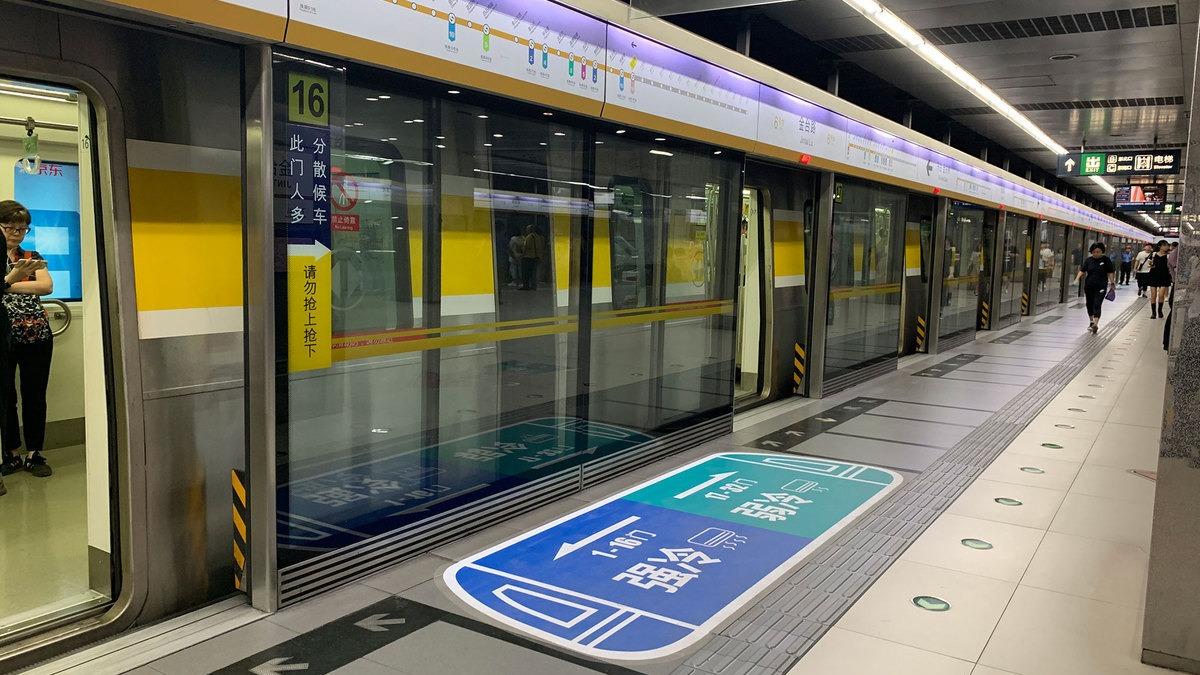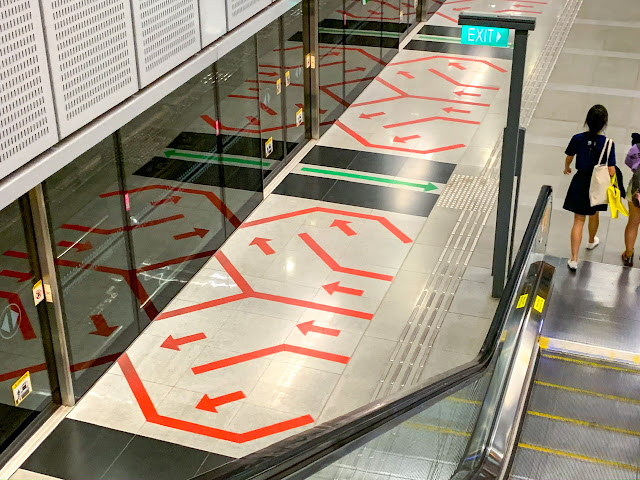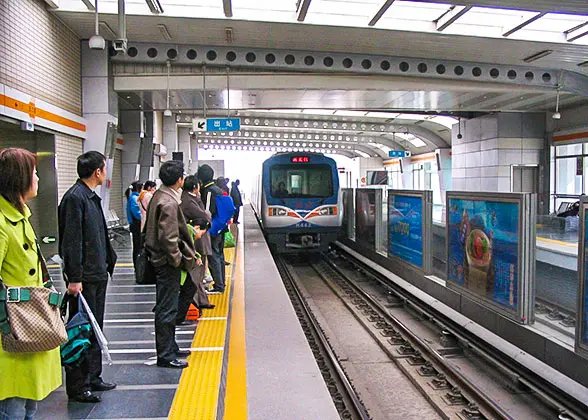Public transport systems play a crucial role in the sustainable development of modern cities, serving as the backbone for efficient and environmentally friendly urban mobility. As urbanization continues to accelerate, with more people flocking to urban centers, the importance of efficient and reliable public transportation becomes increasingly crucial. These systems – including buses, ferries, trams, and metro systems – stand as cornerstones in tackling the pressing challenges of urban congestion, traffic gridlock, and environmental sustainability. Among these, metro systems stand out as one of the most reliable and widely used public transportation systems worldwide, and their role in urban planning and daily commuting continues to expand as cities modernise and grow.


Metro Systems
Metro systems have become quite an essential part of every city-dweller’s life. It brings about a lot of much-needed advantages i.e., high reliability, large capacity, and low environmental footprint. The regularity and preciseness of metro schedules contribute significantly to reducing uncertainty and enhancing the overall efficiency of daily commutes. This makes metro systems an essential tool for city planners seeking to address mobility challenges of population growth and urban sprawl while simultaneously reducing greenhouse gas emissions and making cities more liveable.
As metro systems manage the movement of large urban populations, they face many challenges related to crowd management. During peak hours, stations and trains often exceed capacity which leads to overcrowding that causes serious safety concerns and uneven service experiences. Passengers may find it impossible to board trains coming from overcrowded stations, while simultaneous entry and exit through the same doors leads to confusion and anxiety among passengers.

Addressing the challenges requires effective crowd management tactics that are designed to manage crowd behaviour on a micro level which help in ensuring that individuals act in ways that contribute to an orderly environment, optimising the functionality of metro systems. Some examples of this include designated weighting areas, barriers, visible signage, etc.



Crowd Management Techniques in Singapore MRT’s — Commuter Queues
While crowd management tactics play a crucial role in maintaining good commuter behavior, another vital aspect of crowd control lies in how passengers are admitted into metro systems. Admission policies shape the flow of passengers boarding trains, directly impacting operational efficiency and passenger experience.
One way in which many cities worldwide control regulate admission is by employing dedicated staff to regulate boarding during peak hours. These employees, often referred to as passenger arrangement staff or pushers, are tasked with ensuring that trains are filled to optimal capacity while minimizing delays. These personnel act as real-time monitors, adjusting their approach based on live crowd conditions to ensure safety and efficiency. Among the most famous examples is Japan’s oshiya—literally “pushers”—who help commuters board crowded trains during rush hours.



Passenger Pushers in Metro Systems
Apart from employing staff, metro systems rely heavily on structured admission policies to allocate resources effectively. These policies determine how passengers are prioritized during boarding and have far-reaching implications for both operational efficiency and fairness. Such policies often rely on predefined criteria such as time of arrival or route priority, employing a greedy approach that focuses on immediate optimisation (local maxima) to maximise capacity utilisation.
Some of the admission policies in use include:
- First Come, First Serve (FCFS): Prioritizes passengers based on their order of arrival.
- Revenue Maximization Policy (RMP): Focuses on maximizing economic returns by prioritizing passengers based on their willingness to pay or arrival time, often leveraging strategies like variable pricing or premium services.
However, these policies frequently neglect fairness, leaving certain passenger groups underserved and exacerbating service inequities.
Fairness-oriented policies (FOPs), by contrast, focus on providing equitable service across passenger groups by minimizing disparities in access and service quality, regardless of a passenger’s arrival time and willingness to pay. Yet, implementing such policies pose significant challenges due to the stochastic nature of passenger demand and existing capacity constraints of metro systems.
This complexity stems from the inherent tradeoff between fairness and revenue. Prioritizing fairness often leads to sacrifices in potential revenue gains. For instance, achieving equitable service might involve allocating space to less profitable passenger groups or adjusting train schedules in ways that reduce overall capacity utilization, leading to a direct tradeoff with economic efficiency. These challenges are further compounded by demand unpredictability, making fairness-oriented approaches both crucial and difficult to implement effectively.
To illustrate, consider a train with a capacity of 100 running through four stations, serving passengers on routes 1 → 3, 1 → 4, 2 → 3, and 3 → 4:
- FCFS: Passengers at station 1 would occupy all available capacity, skipping over those at station 2. On the final leg (3 → 4), only 50 of the 100 passengers can be accommodated, resulting in a total load of 150.
- RMP: The train might entirely bypass station 1 to prioritize higher-revenue routes like 2 → 3 and 3 → 4, achieving the maximum load of 200.
- FOP: The train would allocate space equitably, taking 25 passengers from routes 1 → 3 and 1 → 4, and 50 passengers from 2 → 3 and 3 → 4, resulting in a balanced yet efficient load of 175 without skipping any stations.


Visual Illustration of a few Crowd Management Policies – Fairness Oriented policies can be designed to find the balance between maximising utilisation and achieving Fill-rate expectations.
Further, the stochastic nature of demand further complicates the challenge, making FOPs difficult to implement effectively without innovative frameworks.
In their research paper, “Online Passenger Flow Control in Metro Lines,” Liang et al. introduce the Debt-Associated Adaptive (DAA) policy, an innovative framework that addresses real-time passenger demand while maximizing both load and service fairness. Central to the DAA policy is the concept of “debt,” which quantifies the gap between actual satisfied demand and target fill rates for each origin-destination (o-d) pair. When debt is positive, indicating unmet fill rate targets, priority is given to minimizing this debt in subsequent allocation decisions, with prioritisation proportional to its size.
The DAA policy employs a dynamic programming approach, treating fill rate (fairness) constraints as optimization problems to facilitate efficient revenue maximization. The authors develop a theorem to characterise the achievable fill rate for each 0-d pair thereby setting the stage for revenue optimization with fairness guarantees.
This adaptive mechanism capitalizes on the reusable nature of train capacity, enhancing passenger boarding while promoting equitable service access. Particularly effective for high-volume metro lines, the DAA policy adjusts to the unique conditions of each station and train in real-time, providing a structured framework that aligns allocation and revenue optimization with long-term service level objectives.
The DAA policy was tested on a metro system in Beijing, spanning 23 stations and a total length of 27.5 kilometres (about 17.09 miles). The results were promising, showing a significant improvement in the system’s ability to accommodate more passengers while maintaining fairness in service delivery. By adapting to the varying levels of demand at different stations, the DAA policy helped maximize the total number of passengers served while ensuring that no station or group of passengers was disproportionately affected by overcrowding. This approach stands out as a highly effective means of managing metro systems in large, densely populated cities, where peak-hour congestion is a constant challenge.


Beijing Metro System
Implementing adaptive, real-time approaches to managing public transport systems by using policies like DAA represents a critical step towards optimising urban transportation systems. By continuously monitoring passenger flows and adjusting service levels accordingly, metro operators can optimize system performance, improve passenger satisfaction, and ensure a more equitable distribution of resources. Such measures not only enhance passenger experience and safety but also contribute to the overall efficiency and sustainability of urban mobility solutions. As cities continue to grow and evolve, innovative approaches in metro flow control and crowd management will play an increasingly vital role in shaping urban futures.




